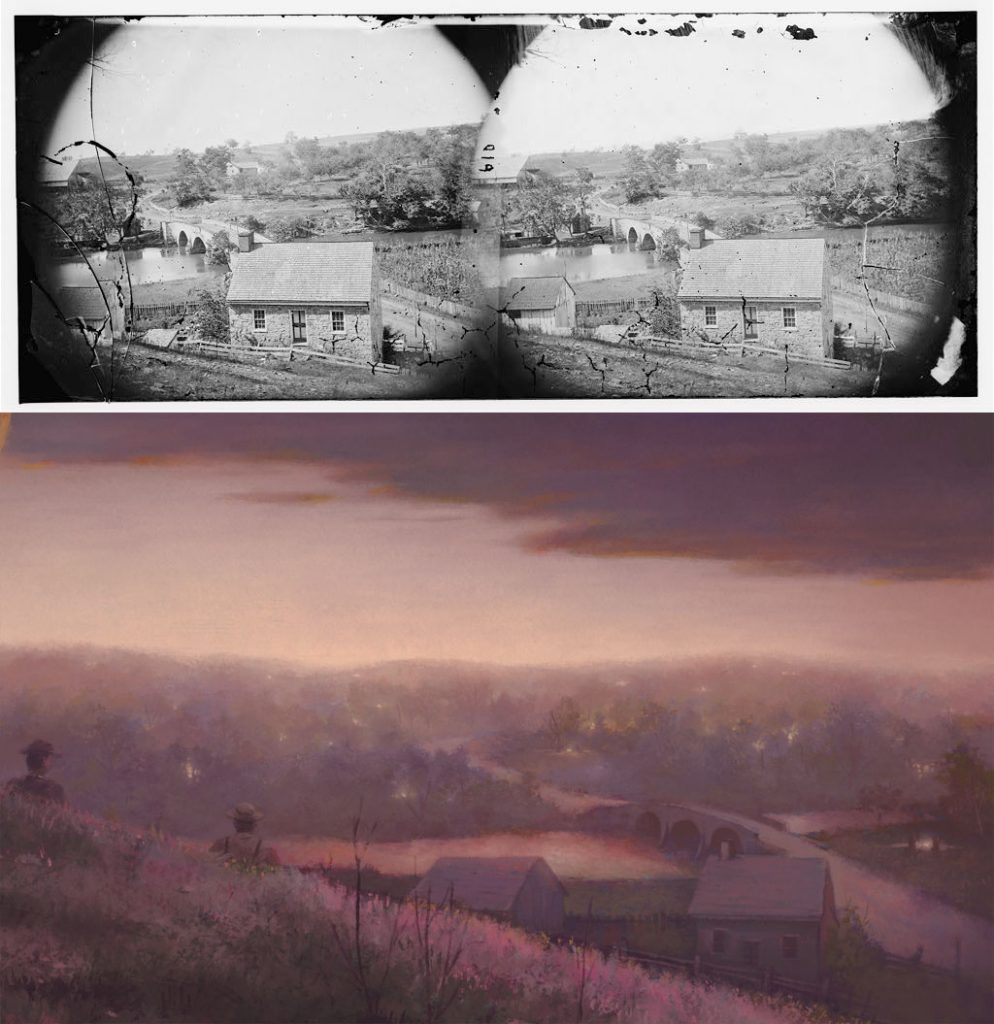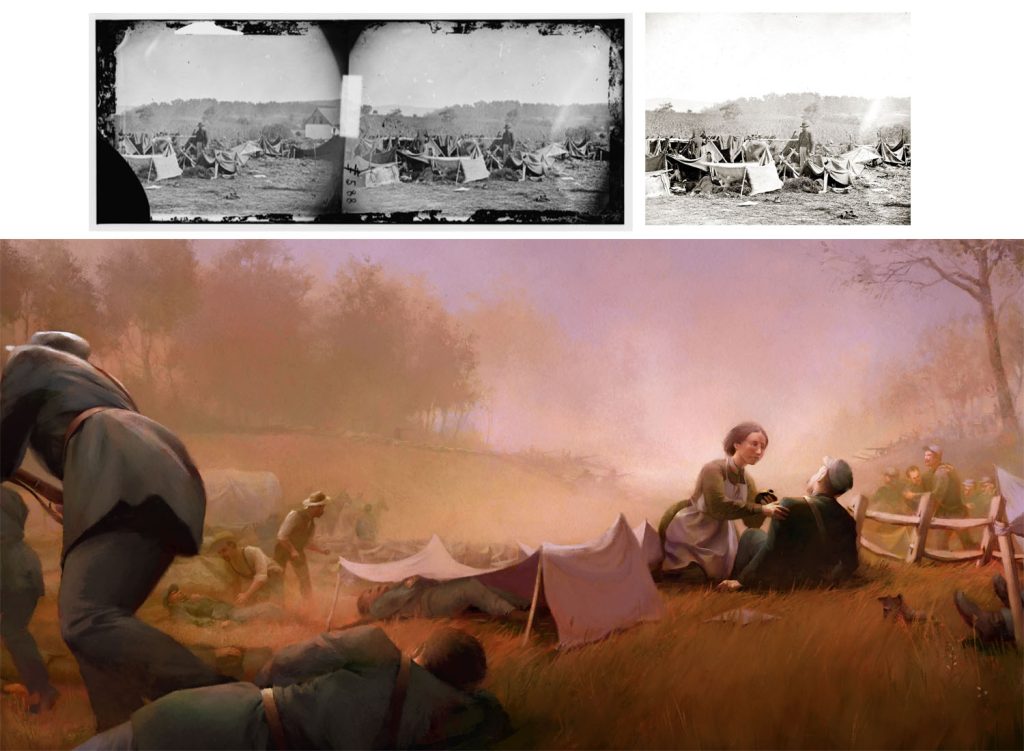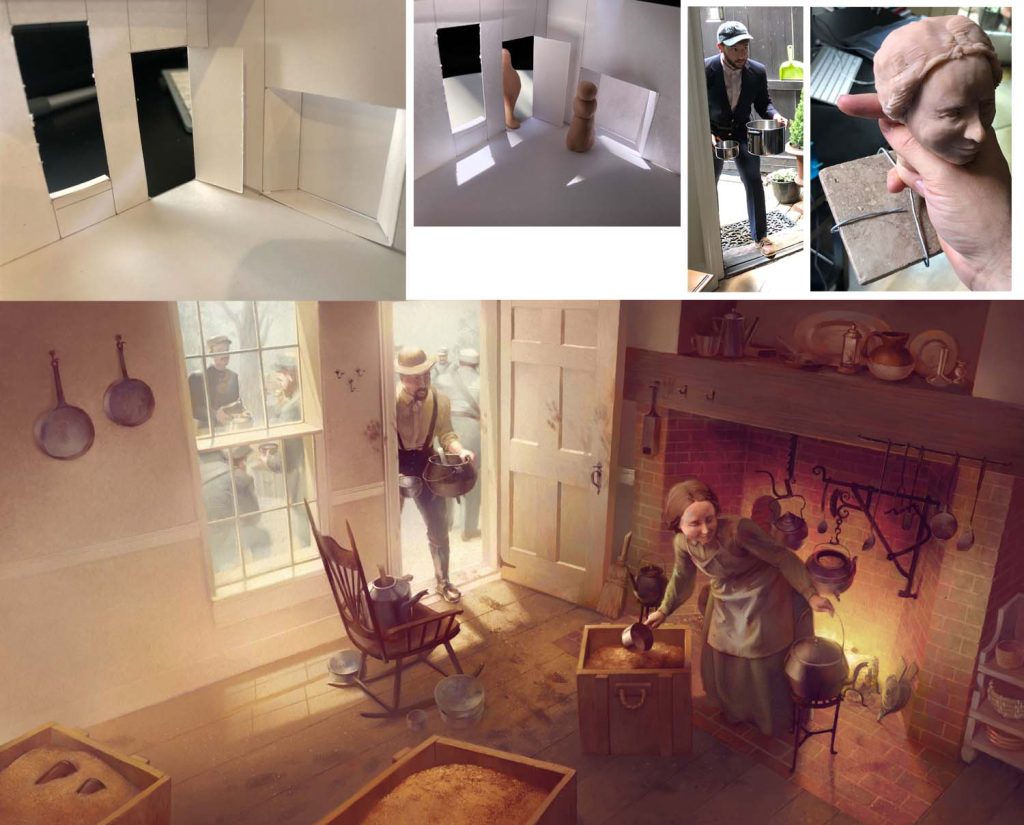Time-Traveling with Clara Barton and Illustrator Christopher Cyr
A guest post peeking into illustrator Christopher Cyr‘s process of creating the stunning art in To the Front!, a new historical nonfiction picture book featuring the biography of nurse Clara Barton, founder of the Red Cross.
There are a lot of small details in an illustration. Like puzzle pieces, they all come together to create a window into the story. When the scene is a re-creation of history, those details are so important to crafting a true-as-can-be narrative and a visual history.
When I began my research that would inform my illustrations in TO THE FRONT! Clara Barton Braves the Battle of Antietam by author Claudia Friddell, the first thing I began looking at was the setting and scenery. Antietam is notable—photography was present on the battlefield in an unprecedented way. That, along with the dedicated work of preservationists, has created a wealth of visual information I was able to study.
To the Front!
Clara Barton Braves the Battle of Antietam

Chief among these for me were the stereographs I was able to view of the sites and locations in which this book takes place. Stereographs, which flourished during this time period, consist of two images taken at the same time on to the same plate, each from a slightly different viewpoint (about the distance of your eyes apart). There was a special viewer you could look through that would “combine” these images into one three-dimensional illusion. While I do not have that equipment, the same effect can be achieved with a little effort crossing your eyes and focusing much as you would do for a Magic-eye image.

Not every place was captured in this way, though; of the locations I knew I had to recreate in my paintings, there were two very important ones—a house occupied by the troops, and a barn converted into a hospital. The kitchen featured in the story was never photographed, but I could study the architectural blueprints and renderings of the Historic American Buildings Survey for other houses on the battlefield, and create for myself a hypothetical layout for a similar house. The barn had been photographed and documented throughout its preservation by the National Parks Service. Using measurements from still shots taken of a NPS video along with photographs, I constructed a scale model from paper. I did something similar with the kitchen scene.

With models like these, plus stereoscopic images and some historically researched imagination, I was able to step back in time to the Antietam battlefield with Clara Barton. Small details that I might otherwise have overlooked were observable in a way that allowed me to really experience events not just as an illustrator, but as a student of history. I paint digitally, but it is still traditional painting. I spend a great amount of time with each corner of my illustrations, and I hope that the care I put in allows others to truly step back in time with me.

Visit Christopher Cyr’s website plaidcats.com for more.


